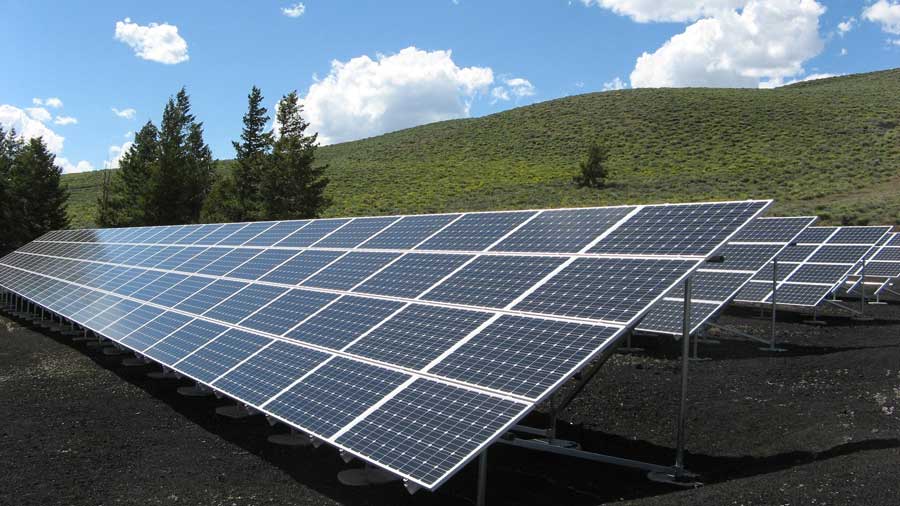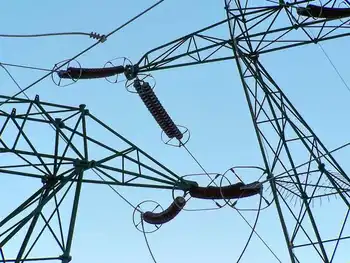Clean energy taking root in Connecticut
By Hartford Courant
Electrical Testing & Commissioning of Power Systems
Our customized live online or in‑person group training can be delivered to your staff at your location.

- Live Online
- 12 hours Instructor-led
- Group Training Available
There, covering almost the entire south roof of the Jennings Fairchild hockey rink, students will see a $1.4 million array of solar panels one of the largest on any school in New England that two renewable-energy firms built at Old Farms. The school estimates that the project will save about $250,000 a year in electrical bills and provide about 75 percent of the school's needs on its main campus.
But Avon Old Farms is just the beginning. From the grounds of a working dairy farm in Torrington, where an innovative wind turbine is going up this fall, to a new mixed-use manufacturing and retail building in Ashford, which will be powered by photovoltaic solar panels, the skyscape of Connecticut is rapidly being altered by the rush toward renewable energy.
These Connecticut green energy projects speak to the optimism of the administration of Barack Obama, who promised while running for president last year to invest $150 billion over 10 years in renewable energy and energy-efficient growth, producing more than 5 million new "green collar" jobs nationwide.
Perhaps more significant, the Avon, Torrington and Ashford projects were built by Connecticut-based companies and thus concentrated the promised benefits of the green-collar revolution here in the state.
Connecticut has already received more than $120 million in the first round of federal stimulus money distributed this year, which is expected to be an additional catalyst in the sector. Gov. M. Jodi Rell announced that Connecticut has formed a consortium with seven other Northeast states to apply for an additional $3.9 million in stimulus funds to identify opportunities for green jobs, establish training programs and create a website with a "green job bank" for interested workers.
"Connecticut has a number of things going for it that has placed us ahead of other states in renewable energy," said Kim Stevenson, the manager of new technologies for the Connecticut Clean Energy Fund, which was created in 2000 to invest in clean energy projects, funded by a surcharge on the state's electric ratepayers.
"We have an educated workforce, a strong high-tech industry, and have spent the last eight years putting in place government programs that fund innovation in industry," Stevenson said. This has positioned us well to receive the early federal stimulus money designated for renewable energy and energy-efficiency projects."
A study prepared for the Clean Energy Fund this spring calculated that Connecticut companies from major corporations like United Technologies Corp. to entrepreneurial startups have already created more than 4,500 direct jobs in renewable energy and energy conservation. An additional 7,200 indirect jobs have been created because of green energy spending. Experts can't predict how many additional green collar jobs will be created in the future. Economists are generally most encouraged by small company growth, considering it the engine of business that powers tomorrow's new jobs. By this standard, Connecticut might be considered a promising little green giant.
Alteris Renewables Inc., the Wilton company that installed the solar panels at Avon Old Farms, typifies this growth.
Alteris was formed by the consolidation of three solar and thermal energy companies since 2006, and is now considered one of the leading clean energy companies in the Northeast, ranked No. 205 on Inc. magazine's list of America's 500 fastest-growing companies. In addition to the Avon Old Farms project, the company has just completed the installation of solar panels to power the new "green headquarters" of container manufacturer Pith Products on Route 74 in Ashford.
Earlier this year, Alteris completed a $2.5 million installation of solar panels outside the headquarters of the Timex Group USA in Middlebury, one of the largest solar arrays in the Northeast. The project was supported by a $920,000 grant from the Clean Energy Fund. EOS Ventures of Hancock, Mass., has partnered with Old Farms to run the solar project.
Ron French, president of Alteris' solar division, said the company, which now has 105 employees, has experienced job growth of between 20 and 30 percent a year. Its revenues have climbed from $4 million three years ago to $36 million this year.
"Connecticut is one of the leading states in the country for renewable energy in large part because the Clean Energy Fund established a strong infrastructure to make projects happen," French said. "But you have to remember how important a point this is. Solar power is still a small industry, trying to make it on its own, and there's no giant like Exxon out there with the capital to make big investments. The technology will get much cheaper over time and prices are already coming down, but to get started, you need that government funding."
Another company, Optiwind, was founded in Torrington in 2006 to take advantage of an unserved niche in the wind energy market relatively small-powered, low-maintenance turbines that can be located on the properties of schools, hospitals or factories to provide most of their needs. The company's tube-shaped towers are designed to accelerate light winds to power a cluster of small turbines. Optiwind has grown from two to 20 employees in two years and estimates it will grow to 100 employees in three years. The company will install its first test turbine on the Klug dairy on the west side of Torrington this fall, providing all the electricity for the 167-acre farm.
"The wind is a crop that the Klugs always had since founding their farm in 1899, and now we're going to be able to harvest that," said David Hurwitt, Optiwind's vice president. "This is an ideal application for us and typical for Connecticut and many other parts of New England."
That's because the region has a lot of winds between 5 and 12 mph and some of the highest utility costs in the U.S., he said.
Connecticut's Fortune 500 giants are also active in the booming renewable energy field. Three companies General Electric, Duracell and United Technologies are competing in the exploding global business of fuel cells, which chemically produce electricity without producing harmful exhausts and gases. General Electric has also become a leading producer of wind turbines. United Technology's Otis Elevator unit is now marketing elevators that convert the energy of a descending elevator back into electrical power for the building, and its UTC Power division is installing fuel cells at a new Whole Foods supermarket in Massachusetts that will power most of the building.
Although many of these clean power products are made elsewhere in the country or overseas, much of the design and engineering work is done in Connecticut.
But it is Connecticut's location in the cold, energy-dependent Northeast, with high electric rates that will generate the greatest demand for green jobs.
"The economics for renewable energy make sense in Connecticut for a simple reason," Hurwitt said. "You always locate your business in the heart of your best market."











